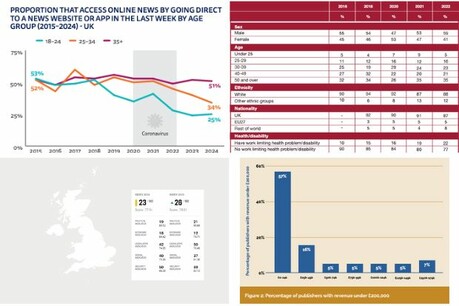
Strengthening Democracy through Media Freedom in Jonglei State, South Sudan
September 15, 2025
11 Modes Journalists Use to Connect With Their Audiences
September 23, 2025Below are 16 free or partially free sources that provide data, reports, tools, and insights into trends, practices, and challenges in journalism & media. Good for backing up stories, understanding audience metrics, or shaping newsroom strategy.
| Hub | What It Offers | Use Cases |
|---|---|---|
| Reuters Institute for the Study of Journalism (RISJ) | Publishes the Digital News Report with data from ~95,000 online news consumers in ~47 countries. Also has studies on trust, newsroom leadership, etc. | Compare audience behaviour across countries; find data on trust or willingness to pay. |
| Reporters Without Borders (RSF) | Their Press Freedom Index shows legislative, political, social, and security conditions in various countries. | For reporting on freedom of the press, media environment risks, and comparing country rankings. |
| Pew Research Center | Public opinion data; includes surveys about news consumption, perceptions, social media, etc. Mostly US-oriented but with international data too. | To get survey data/trend lines on media trust, user habits, and platform usage. |
| JournalismAI (LSE Polis / Google News Initiative) | Research, case studies, and reports about AI in journalism (ethics, tools, effects). | Useful when working on stories about AI tools in media, automation, and ethics. |
| Ofcom (UK) | Reports on UK broadcast consumption, public service obligations, performance of broadcasters, etc. | For UK-based work on TV/radio audiences, regulation, and spectrum. |
| Comscore | Analytics platform ranking top digital sites, mobile vs desktop traffic, etc. Limited country coverage. | To see how media outlets compare in reach, traffic, and trends in digital vs mobile. |
| National Council for the Training of Journalists (NCTJ) | Industry research with a strong focus on diversity within UK journalism. | Good for investigating representation, diversity trends, and equality issues. |
| Public Interest News Foundation (PINF) | Index that profiles the independent publishing sector; publishes surveys about indie newsrooms. | For studying small-scale news outlets, public interest journalism economics. |
| International Center for Journalists (ICFJ) | Global research projects: disinformation, safety of journalists, effects of the pandemic, etc. | Reporting on safety risks, global threats to journalism, and journalism in crisis zones. |
| Socialinsider | Provides benchmarks and case studies about social media usage and audience growth on platforms. | Useful for digital audience work, comparing performance across platforms. |
| ABC (Audit Bureau of Circulations/analogues) | Independent verification of media circulation / reach figures; magazine, newspaper, newsletter data. | To cite verified circulation/distribution numbers. |
| Newsguard | Ratings/evaluations of online information sources; misinformation tracking; “Reality Check” newsletter. | For assessing source credibility, reporting on misinformation. |
| YouGov | Survey data on public opinion, including media-related questions, and global coverage. | Polling public attitudes to media, politics, and trust. |
| WAN-IFRA | World Press Trends outlook reports; broader data on publishers, press trends. (Membership required for some content.) | High-level global comparisons; industry trends. |
| Charitable Journalism Project | Research to influence policy; e.g., tracking news deserts in the UK. | Local journalism decline; access to news; public policy impact. |
| Medill Local News Initiative (US focus) | Research & analyses on the US local news sector, digital disruption, and “State of Local News” reports. | If doing comparative work about local news challenges, it is useful even outside the US for patterns. |
Why These Matter
- Evidence-based journalism benefits hugely from robust data—whether you’re exploring media trust, misinformation, audience behaviours, diversity, or the financial viability of news outlets.
- These hubs often combine quantitative (surveys, metrics) + qualitative (case studies, reports) research, giving multiple angles.
- For international or comparative stories, many hubs provide cross-country data (e.g., RISJ, Pew, WAN-IFRA), helpful to contextualize what’s happening in your country.
- When covering regulatory issues, media safety, or press freedom, sources like RSF, ICFJ, and Newsguard are particularly relevant.
Reference –
https://www.journalism.co.uk/news/10-media-research-hubs-for-journalists/s2/a744411/

